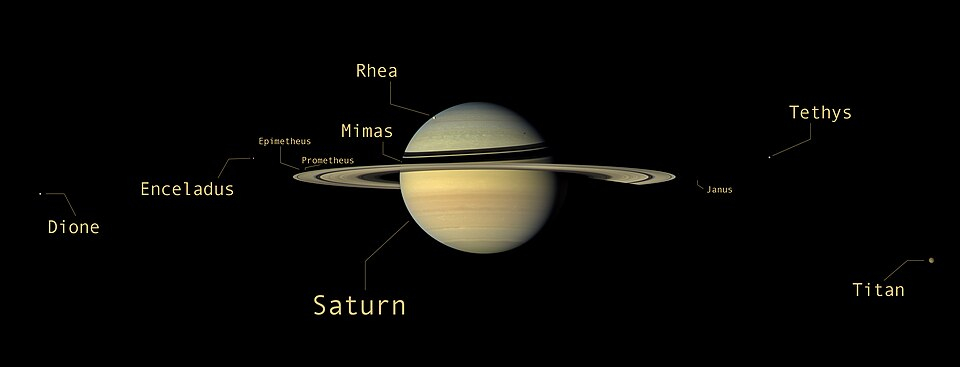Our solar system has eight planets, namely, Mercury, Venus, Earth, Mars, Jupiter, Saturn, Uranus, and Neptune. Out of these planets, Mercury and Venus do not have any moons. Every other planet has moons. Both Earth and Mars have confirmed moons with no provisional moons. Jupiter, Saturn, Uranus, and Neptune have traces of both confirmed and provisional moons. A confirmed moon's existence is confirmed by astronomers, whereas in the case of a provisional moon, astronomers have made observations about the moon of the respective planet but require further investigations and probing to confirm its existence.
Check Out: Who are Gen X?
Planets and Their Moons
| Planet | Confirmed Moons | Provisional Moons |
| Mercury | 0 | 0 |
| Venus | 0 | 0 |
| Earth | 1 | 0 |
| Mars | 2 | 0 |
| Jupiter | 53 | 26 |
| Saturn | 53 | 29 |
| Uranus | 27 | 0 |
| Neptune | 14 | 0 |
Saturn is the second-largest planet in the solar system after Jupiter. In terms of position from the sun, it is sixth in number. Known for its magnificent ring system, Saturn is a gas giant composed mainly of hydrogen and helium. Saturn has a low density, which means it could float in water if a large body of water existed. Though other planets have rings too, the ring of Saturn is stunning and most visually breathtaking to look at. It cannot be denied that Saturn is one of the most mesmerizing planets in our solar system. Beyond its physical structure, Saturn plays host to a vast collection of moons, making it a rich field of study for astronomers and space enthusiasts alike. The winds on Saturn can reach speeds up to 1,800 kilometers per hour, and its storms can last for years.
Check Out: Tom Cruise Net Worth
The Planet With Most Moons

The planet with the most moons is Saturn. We could crown Saturn as the king of the moons because of the highest number compared with other planets. The total number of moons is 274. In Saturn’s orbit. This has been confirmed by NASA.
Let’s discuss some of the prominent and important moons of Saturn. Some of the moons of Saturn are larger in size than other planets! For example, the giant moon Titan is bigger in size than the planet Mercury. Titan is officially the biggest moon of Saturn. The opposite is also true. Some moons of Saturn are extremely tiny in size, such as Enceladus. Pan is the innermost moon of Saturn. Iapetus is famous for its unique two-toned surface, where one side of its hemisphere is extremely dark, whereas the other shines as bright as a diamond.
Saturn has more natural satellites than any other planet, surpassing even Jupiter. The moons of Saturn are said to have formed 4 billion years ago. With the gradual passing of time, some of the moons of Saturn are naturally drifting away from the planet. NASA suggests some of the innermost moons of Saturn might be pulling away faster than other planets and their respective moons.
Must Read
What is K2-18 b? Know all about the extraterrestrial planet with evidence of alien life
Comments
All Comments (0)
Join the conversation